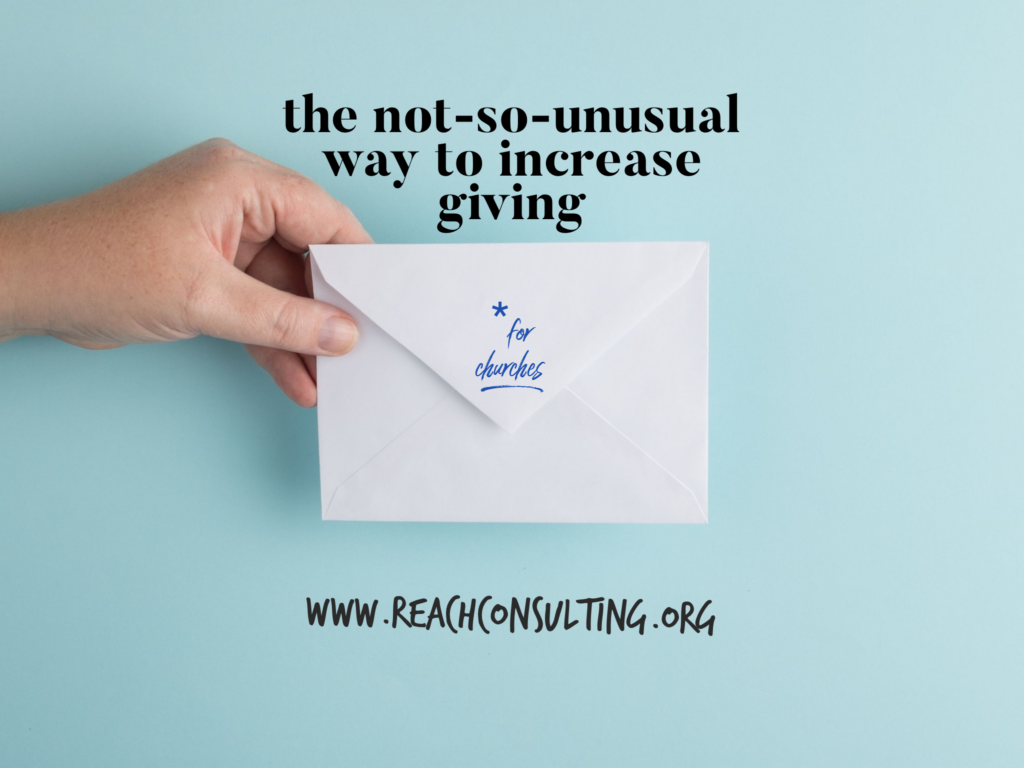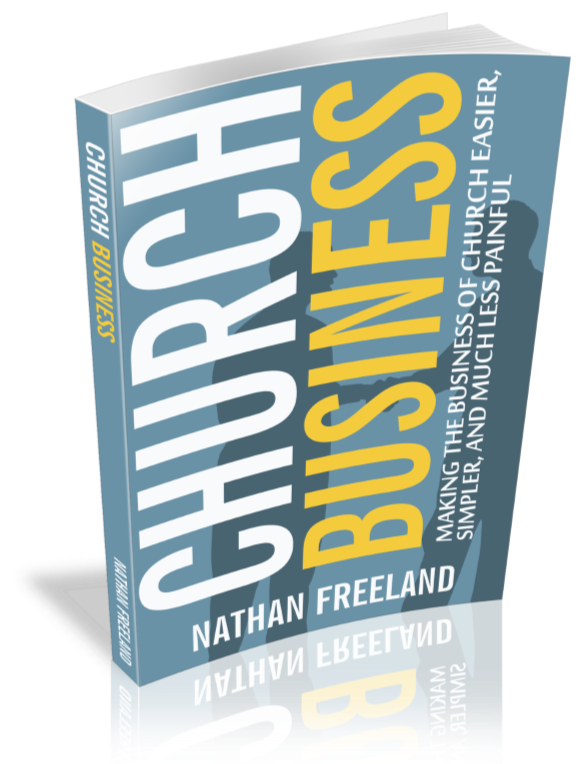Last week I started a blog series focused on helping church leaders increase financial revenue during the pandemic. While these ideas may help now, they’re also great methods to keep doing after the pandemic. The ideas I present are really not new, but they’re not often discussed or used. They may seem antiquated, but they are tried and true! Every church that I’ve helped implement these methods has seen significant increase in revenue. Every. Single. One.
You can read Part 1 here and Part 2 here.
Here is Part 3.

My kids think it’s weird that I hand-write thank you notes to people who have given to a ministry I’m involved with. And they hate it when I make them send a similar note to a relative after receiving a birthday present or other gift. “It’s so much work to write it out,” they say. Yet every day, when I walk home from the mailbox, they ask if they got any letters! Even in the midst of email, texting, social media and all the other technological methods of communication we have, there is still something special about receiving a personalized note in the mail. Among the bills, magazines, and junk mail, we all get a smile on our face when we get a real letter from someone we know.
When it’s unexpected, it elicits wonder. “What’s this for? Why did they send me a letter?” It takes a few moments to open it, building anticipation. “It must be personal because it’s not a printed label with my address but is handwritten. Huh. I need to find out!”
When a handwritten letter is received in the mail that is unexpected, it brings wonder! “What’s this for?” And THAT makes an impact.
Tweet
This may seem archaic in our digital age and your church may have already been working hard to maximize efficiency in communication via email or social media to be more effective and save money. But consider this: Everyone else is moving away from posted mail. Your letter will stand out because no one else is doing it! If you stick with only email or social media, your “note” will be lost among all the other communications received each day.
Everyone else is moving away from posted mail. Your letter will stand out because no one else is doing it!
Tweet
I love technology, embrace efficiency, and am always willing to try the next best thing when it comes to communication. But as a result, I get over a hundred emails a day. Most are junk, but even with those that are specific to me, I know that the sender is using email because of its efficiency—just like I do. It’s not very personal. But a hand-written letter takes time, focus, effort, and it’s costly. If someone sends me a handwritten letter, I take note of that. Perhaps the sender believes I am worth their effort to send me something so personal. My donation was worth it to them to thank me in this manner.
Set your church apart by using this tried-and-true old-fashioned method, and increase giving. Sending a handwritten thank-you letter communicates three things: I see you. I know you. I appreciate you.
Sending a handwritten thank-you letter communicates three things: I see you. I know you. I appreciate you.
Tweet
When the pastor knows you gave a gift and sends a personalized note, it communicates, “I see you.” A letter of thanks recognizes the gift came from a person, someone who means something to the organization, a life, someone who values what you are doing. As a pastor, you need to see that the person chose to give from their finances. It says, “I know you are there!” and helps the donor to understand that someone from the church recognizes they are a real person.
A personal thank-you letter also communicates, “I know you.” If the donor and the pastor do not already truly know each other, a thank-you letter of this type can certainly help jump-start that relationship. There is a connection that is formed between people when one writes a personal letter, hand-prints an address, and signs their name. “Dear Nathan,” communicates that you actually know my name, that I’m not just a donor number. It says, the pastor knows my name, where I live, that I attend this church, and that I believe in it enough to give something from my wallet.
Pastors and donors alike need to know that the other sees value in what they each contribute. If written correctly, a thank-you note also says, “I appreciate you.” Notes like this take time and effort, which is why so many people no longer do it. But this communicates that the recipient just might be worth that effort. It says, “You are valuable enough to me and to our church that, I as the pastor, am willing to do the work to thank you for your gift.” The donor is sure to think, “In the midst of everyone else giving to the church, the pastor wrote me a letter?!” Thank-you letters of this type communicate that the person who gave is loved, not just for their financial gift, but for who they are as a person. In addition, it acknowledges that at some point, the donor saw value in your church. Pastors and donors alike need to know that the other sees value in what they each contribute. Thank-you letters acknowledge this both ways.
When you as the pastor or church leader communicate “I see you, I know you, I appreciate you,” people will not only continue to return to your church, they’ll get involved more, continue to give financially, and might just give a lot more.
If you or your team is looking for more ways to engage your congregation during the “stay-at-home” COVID-19 pandemic, consider writing thank you notes to your members who give financially. It’ll remind your people that you care…and increase giving.
Handwritten. Real. Meaningful.

For this topic and 73 others, be sure to get my book, CHURCH BUSINESS: Making the Business of Church Easier, Simpler, and Much Less Painful. Available on Amazon.com or at www.church.business.